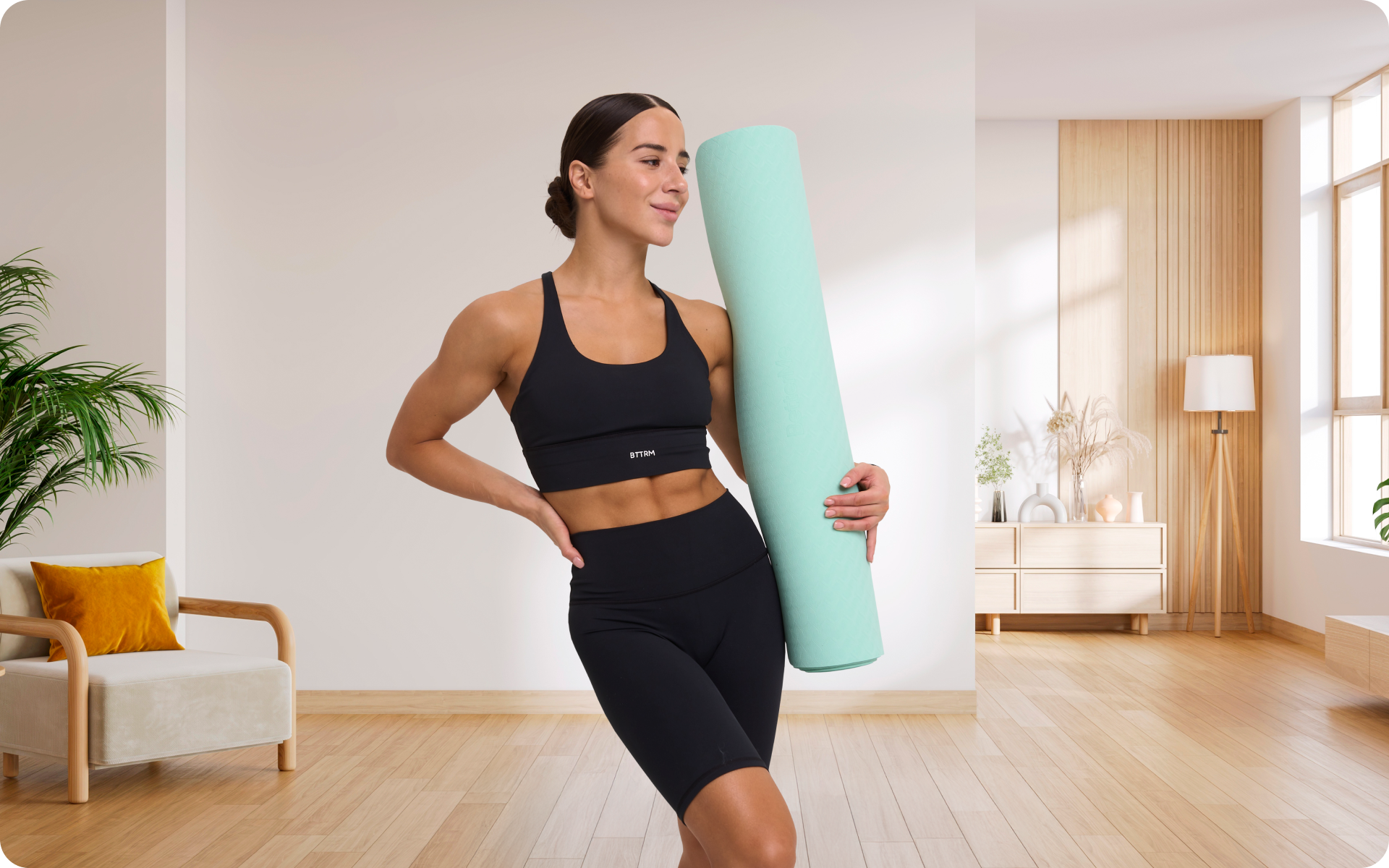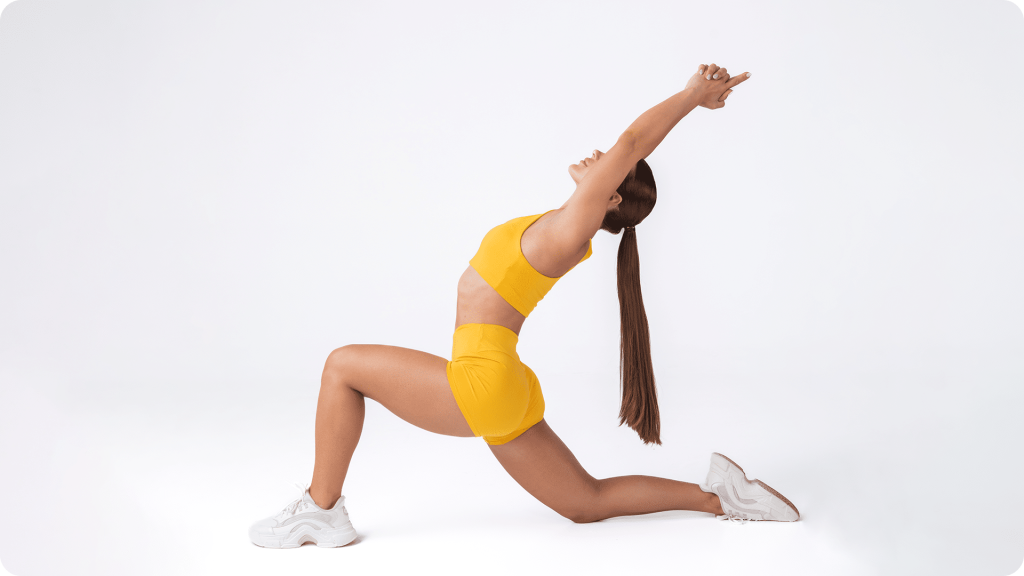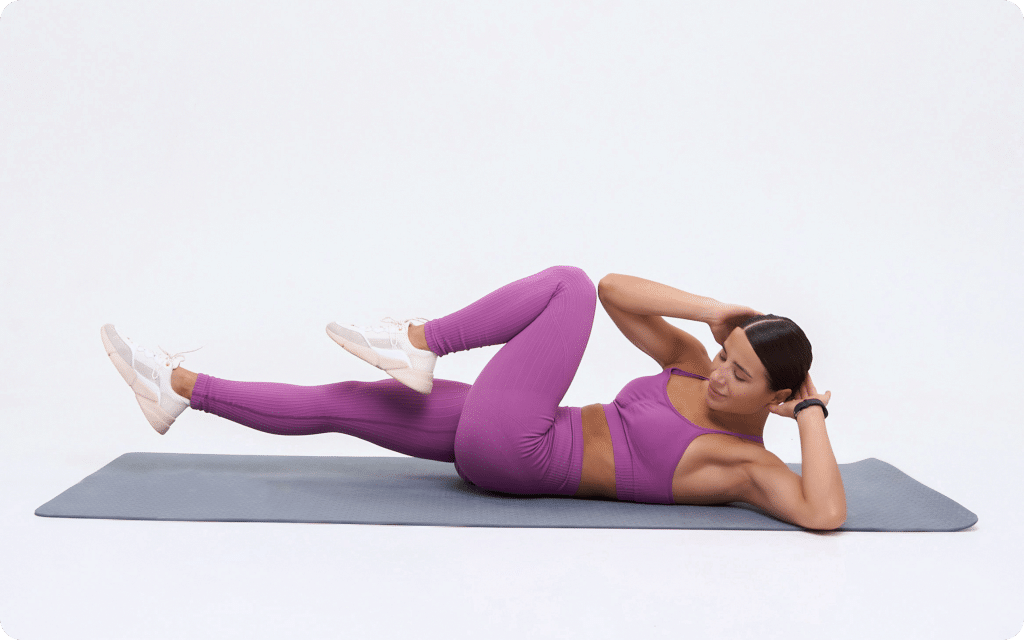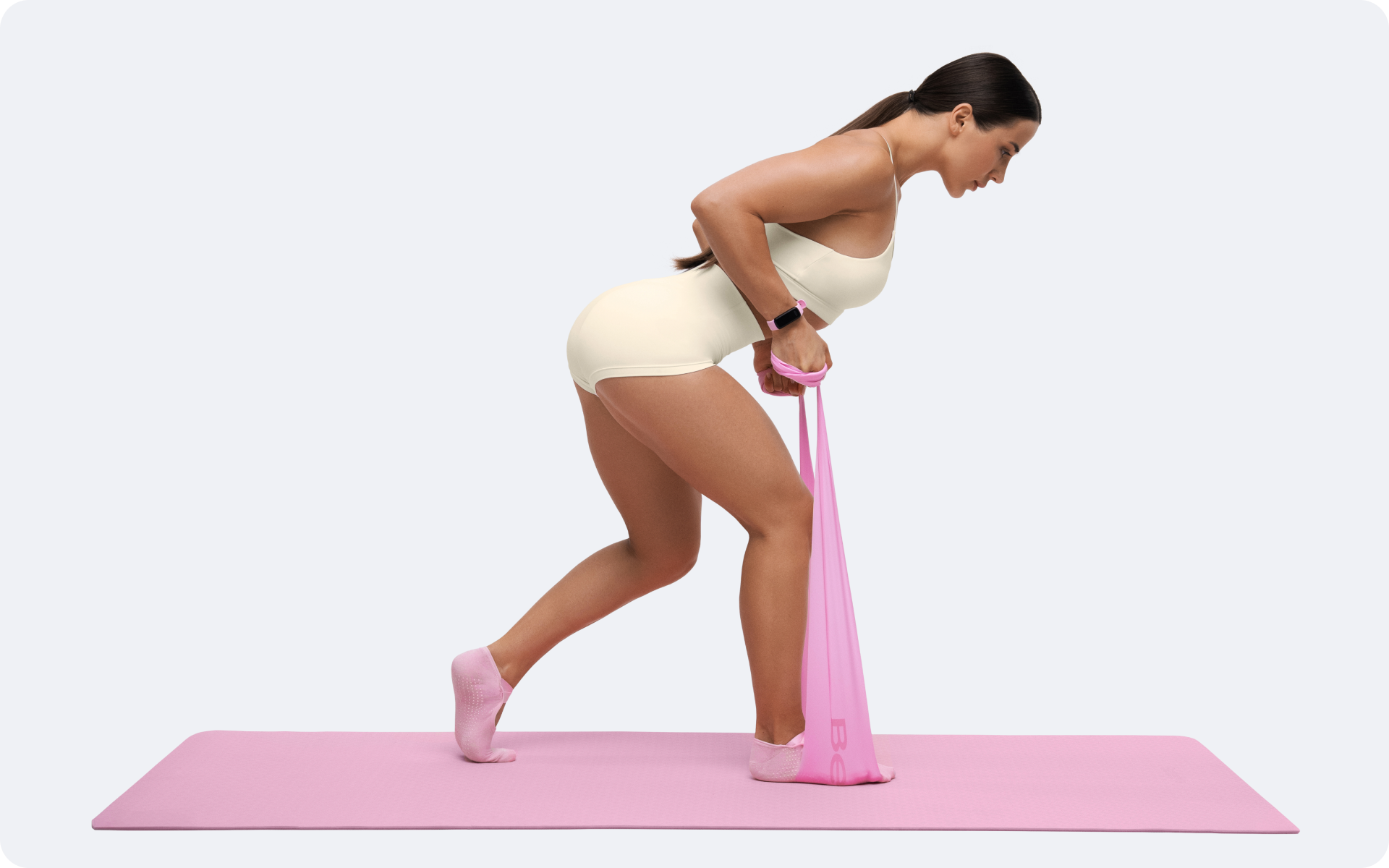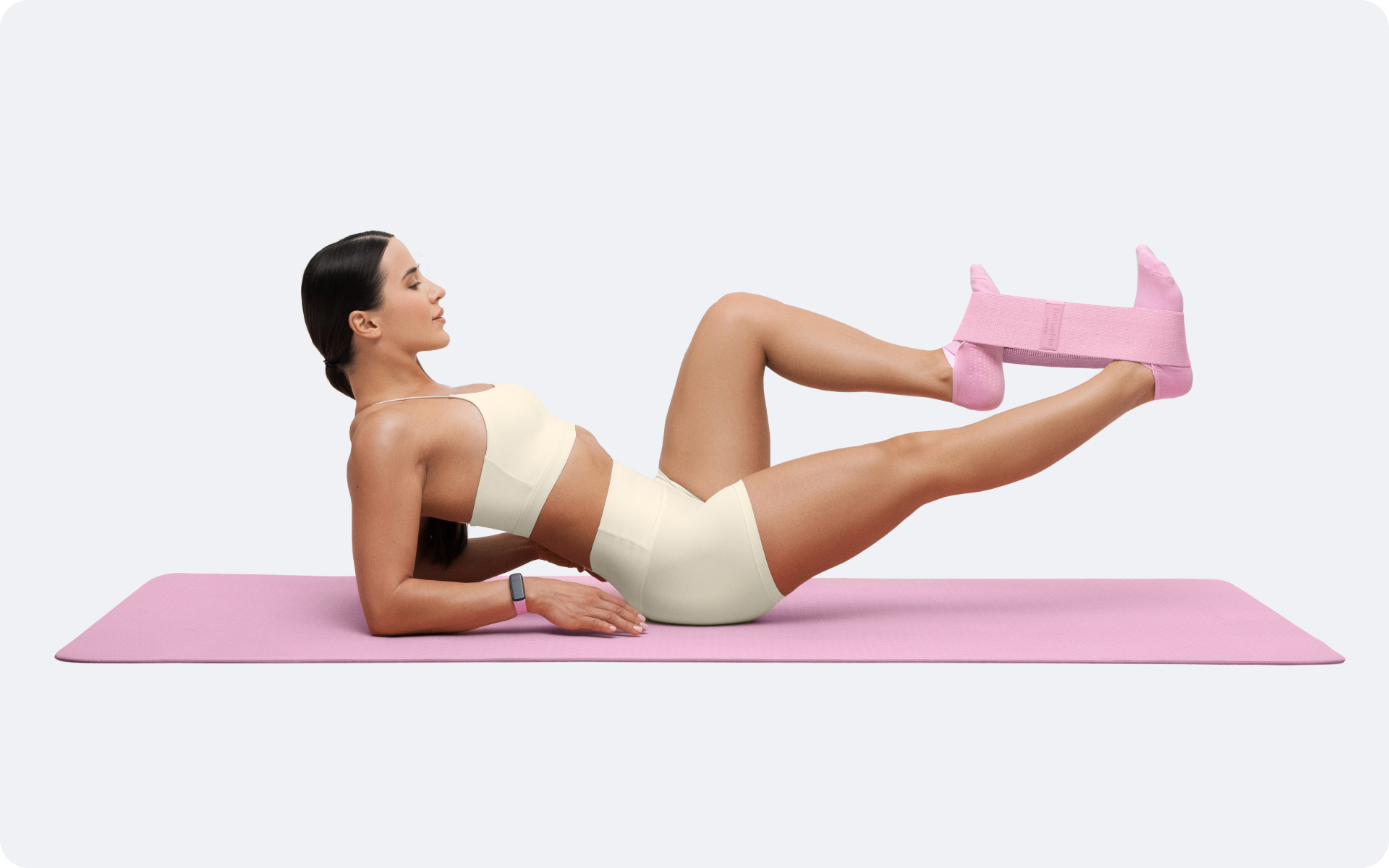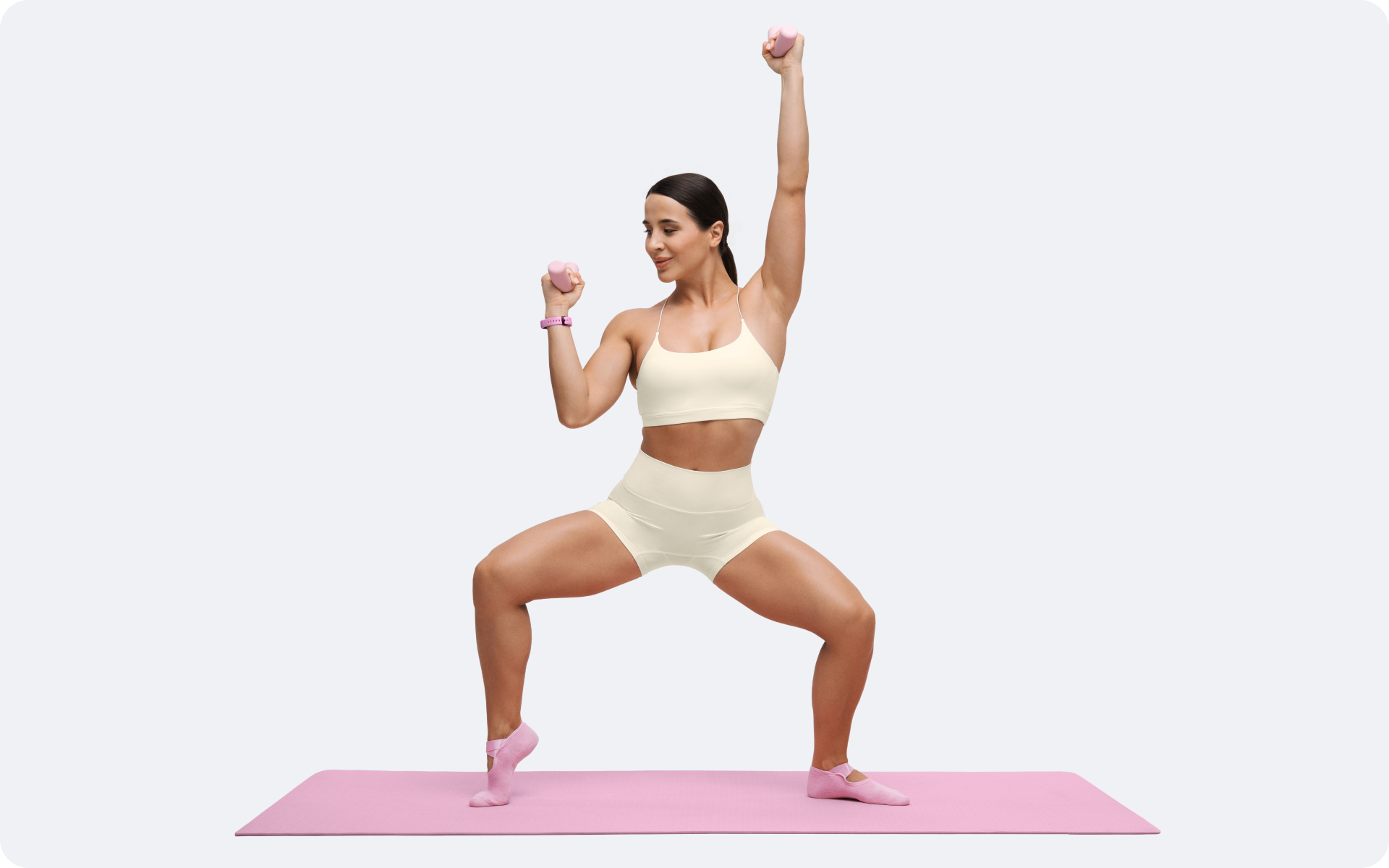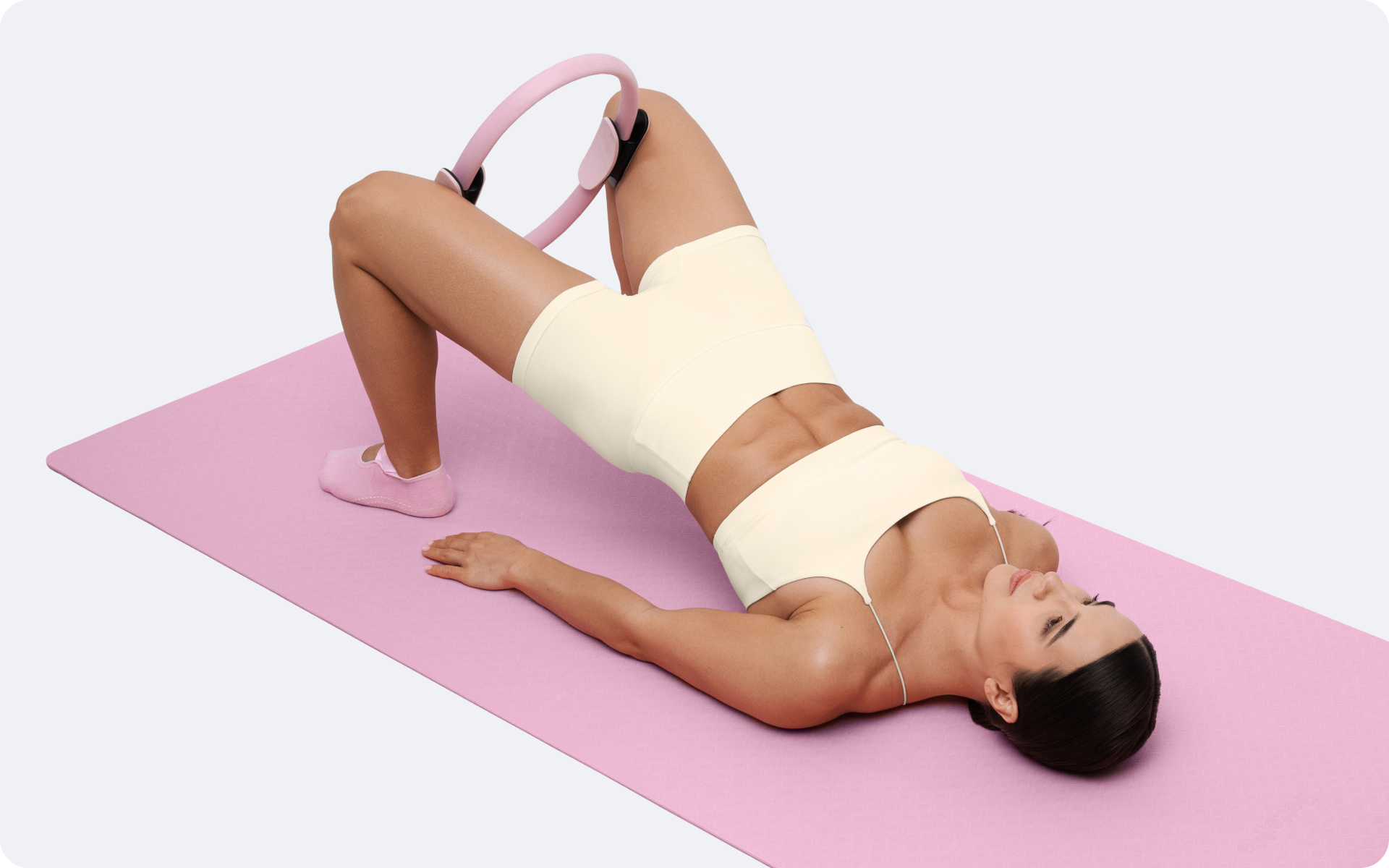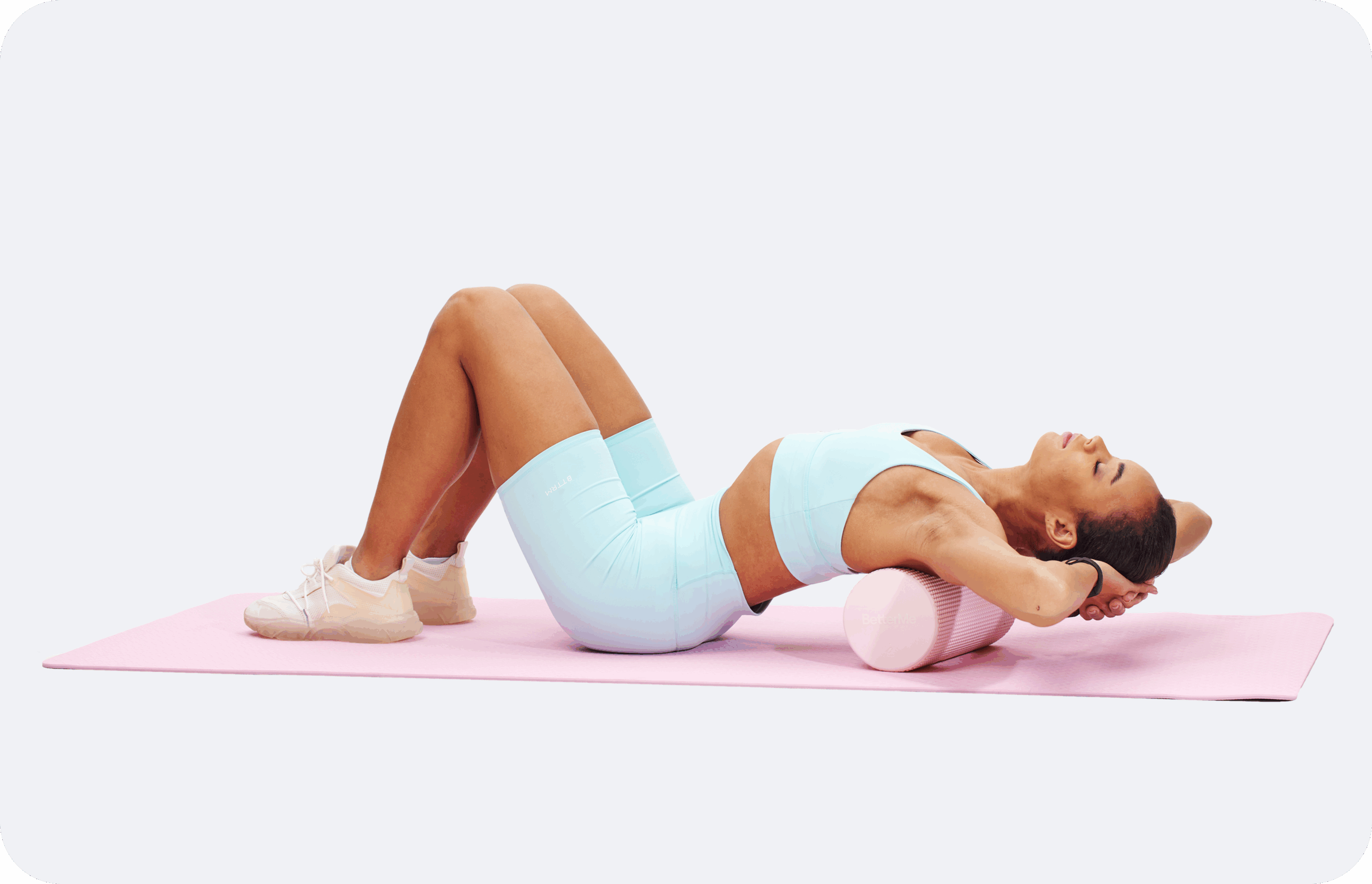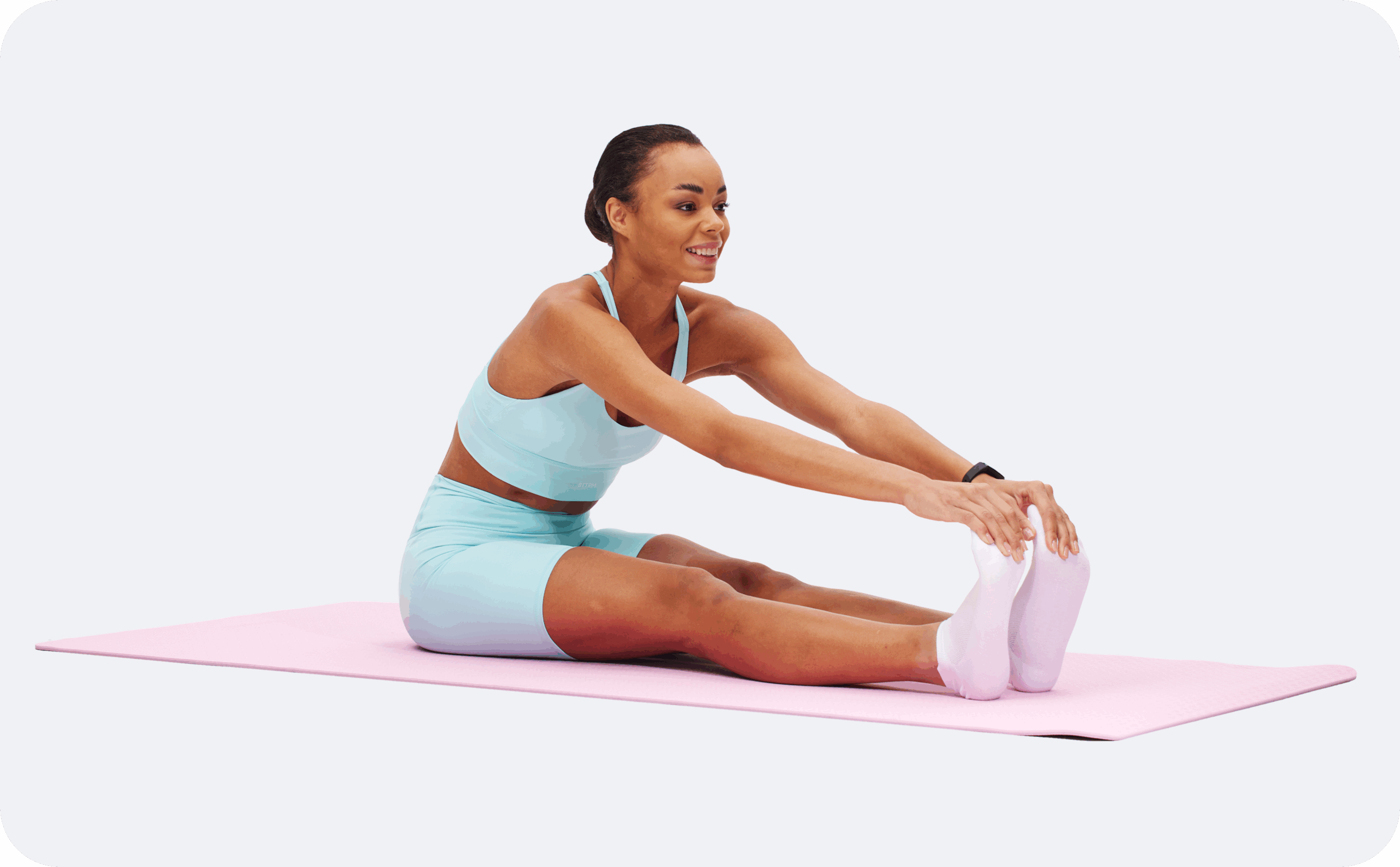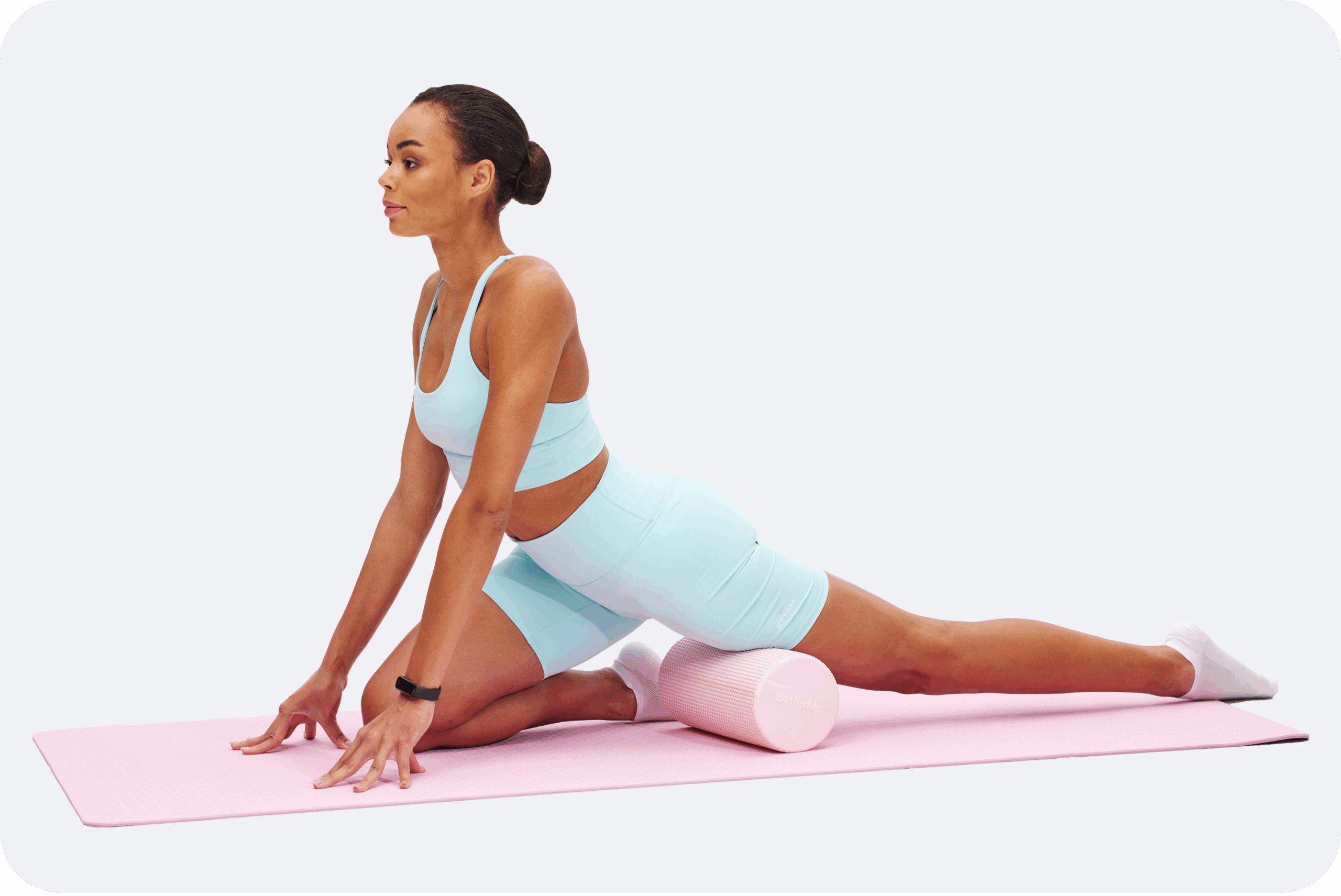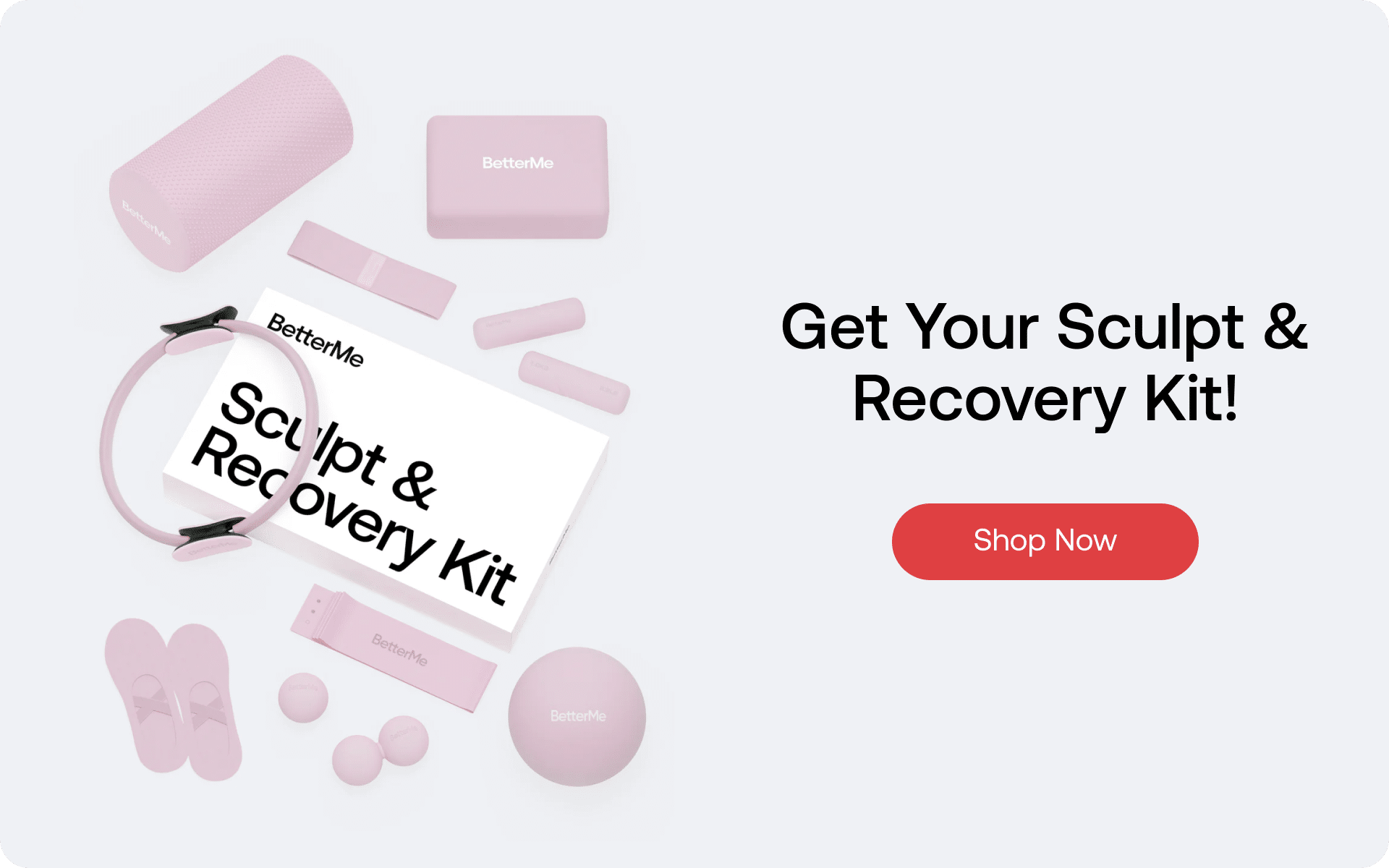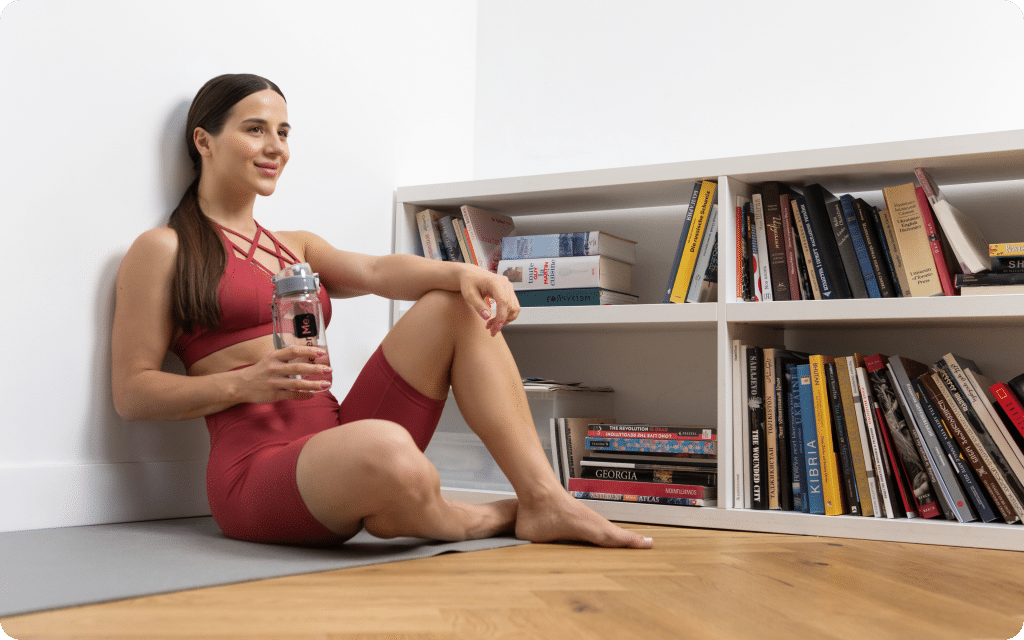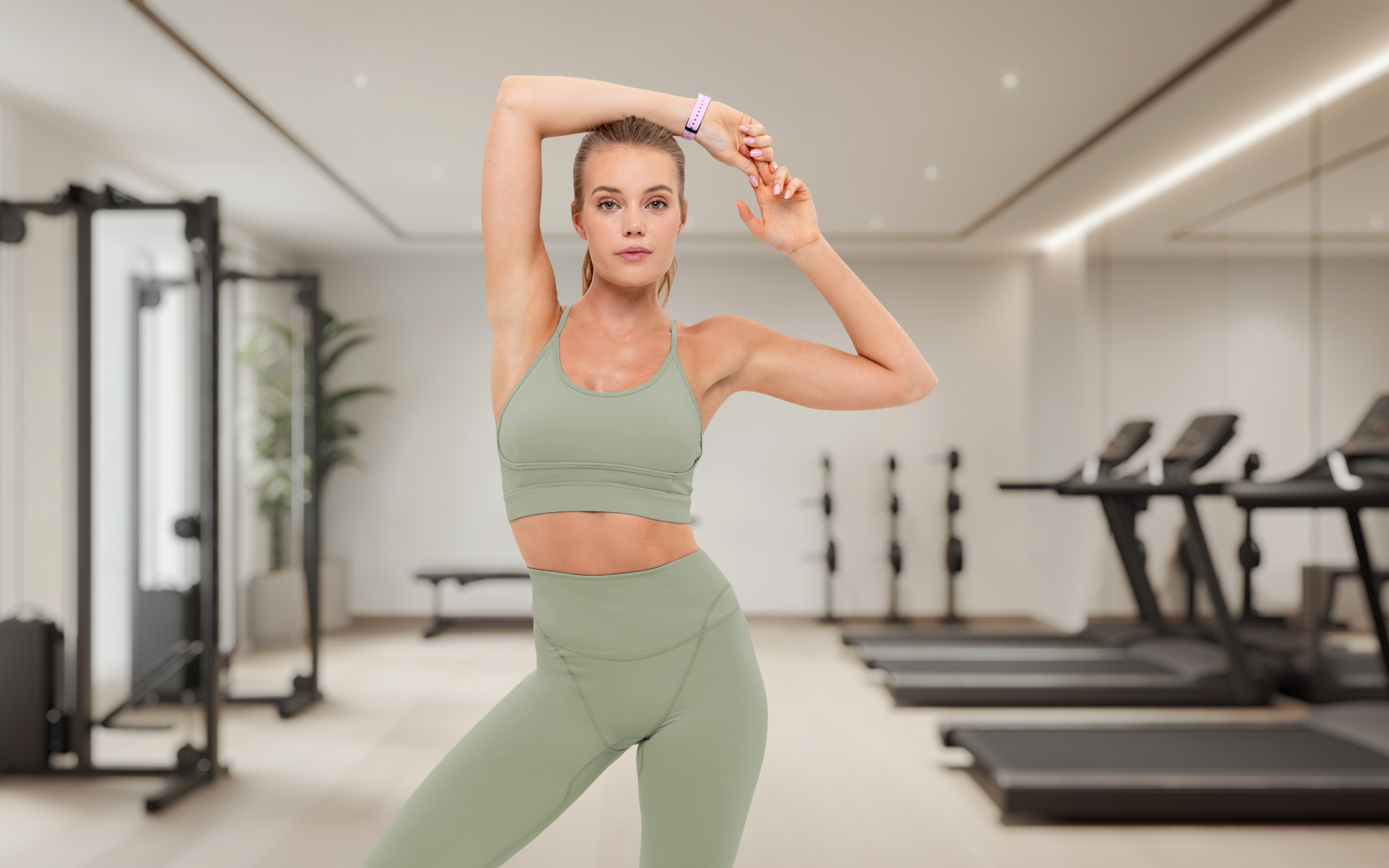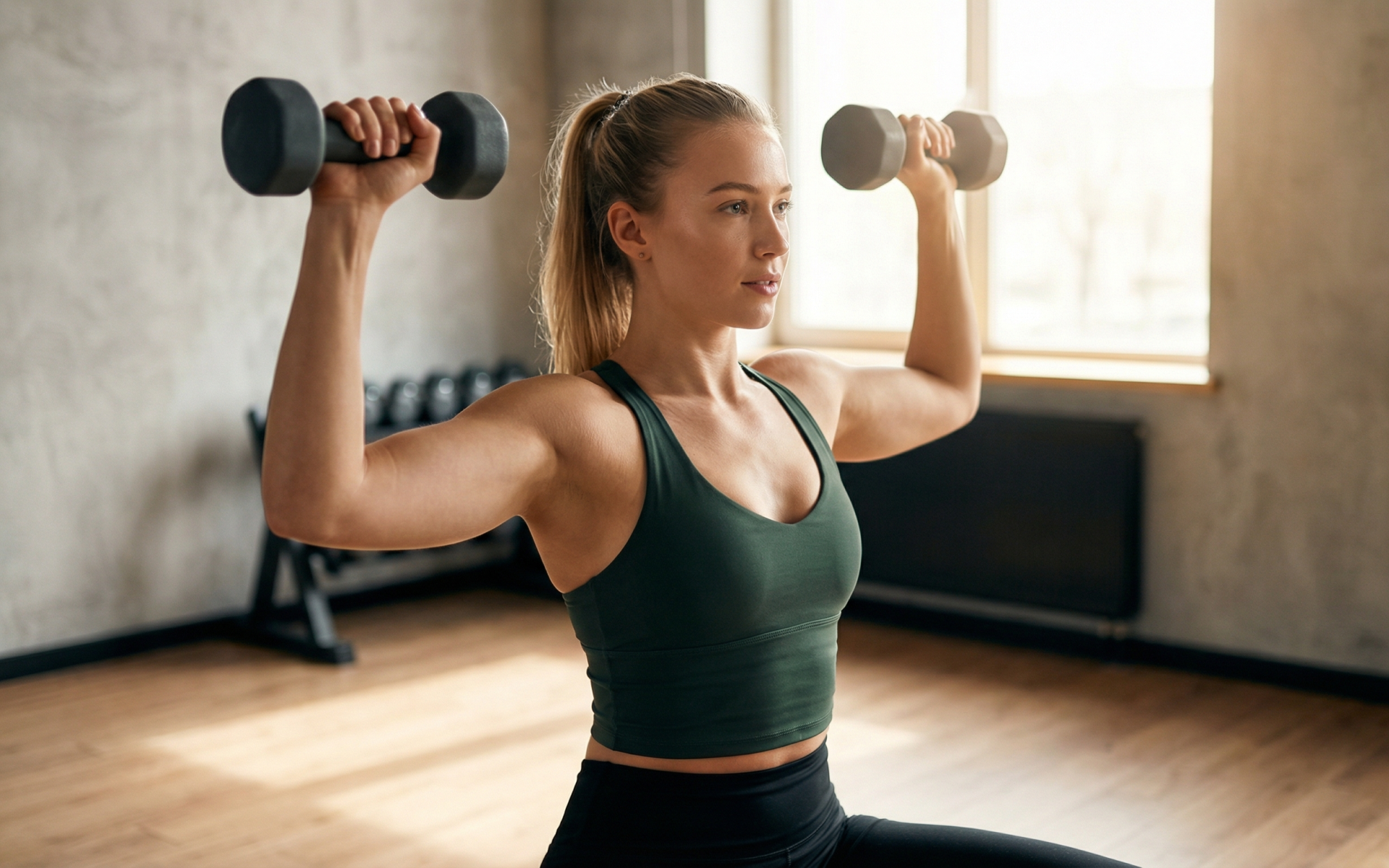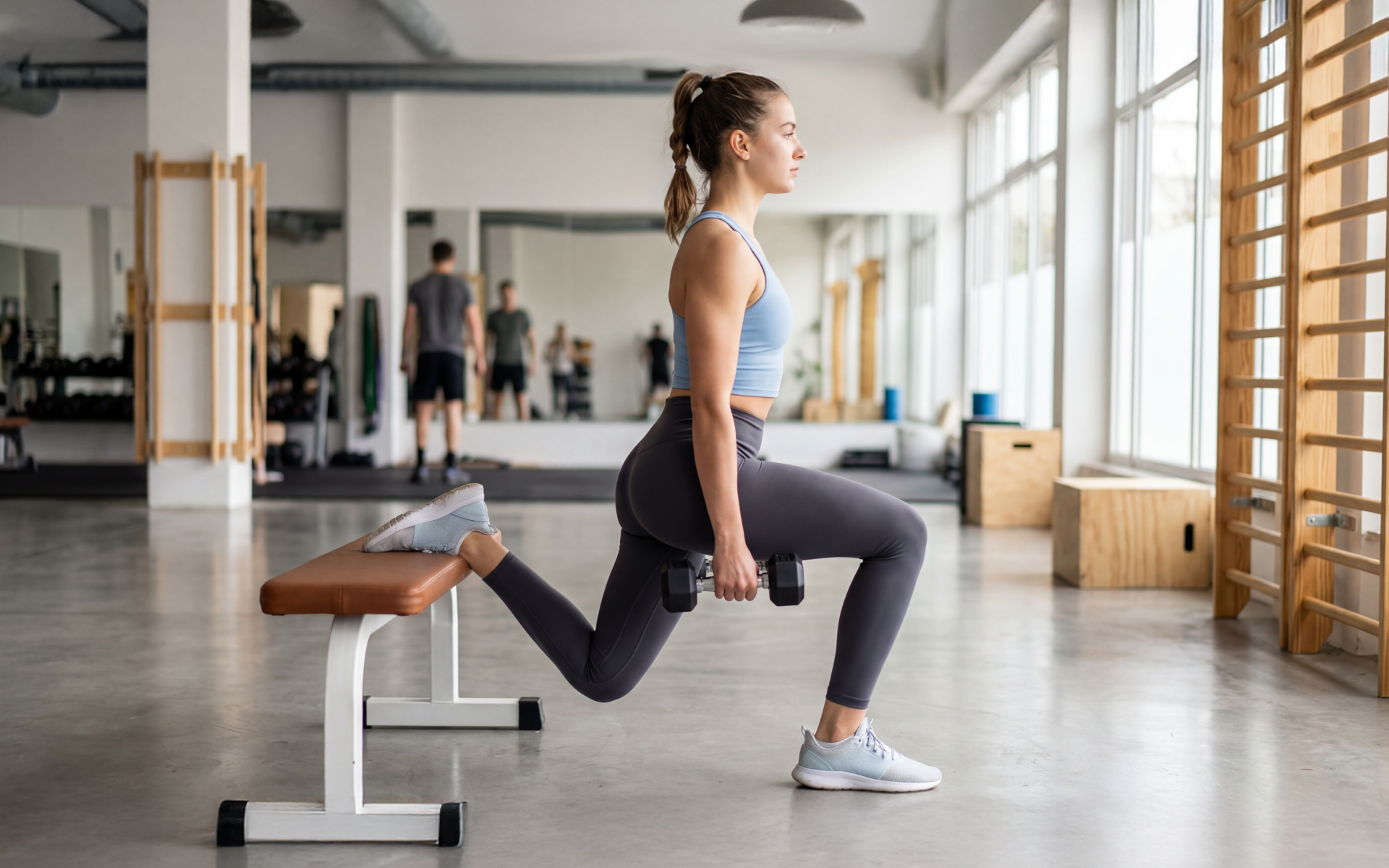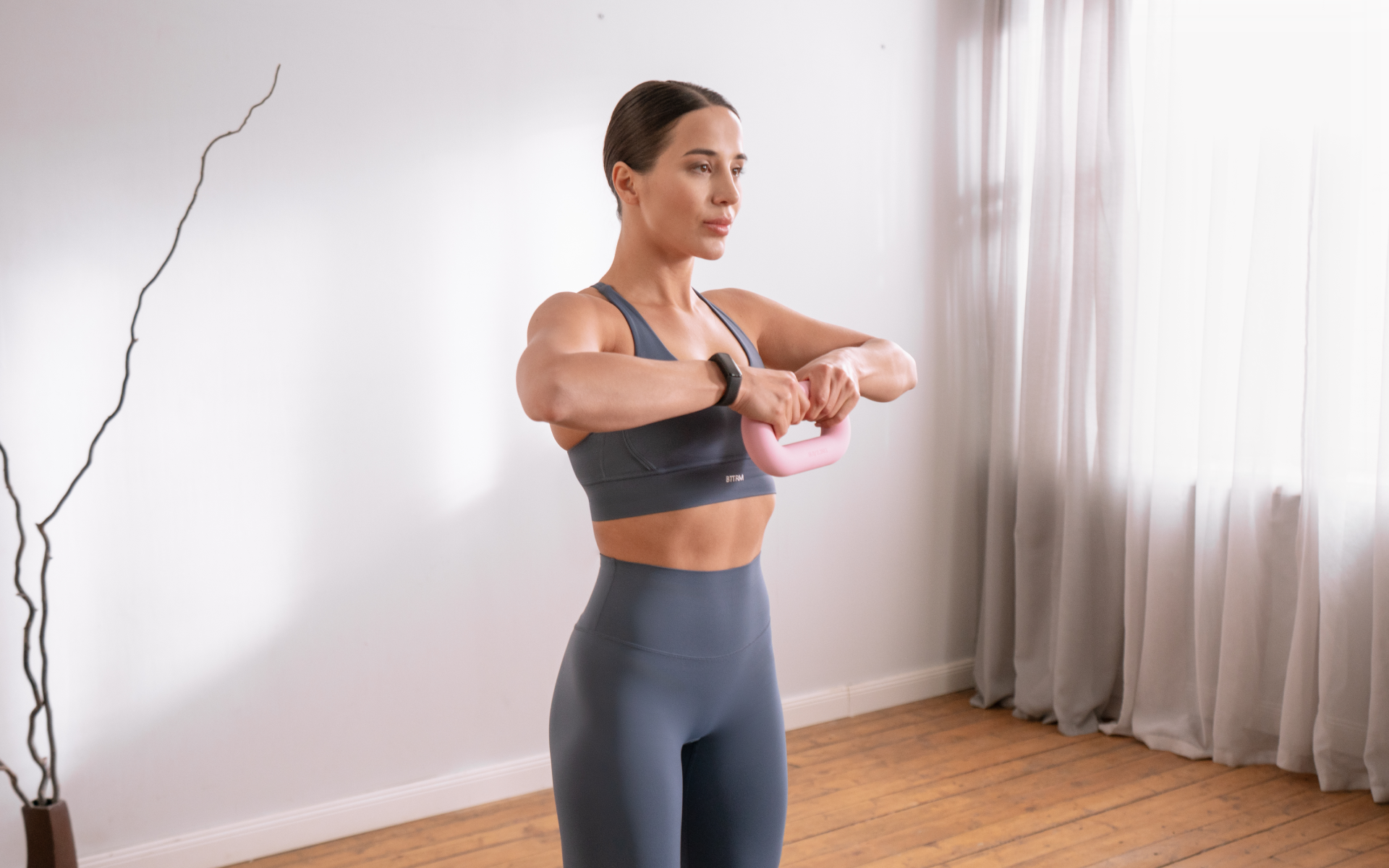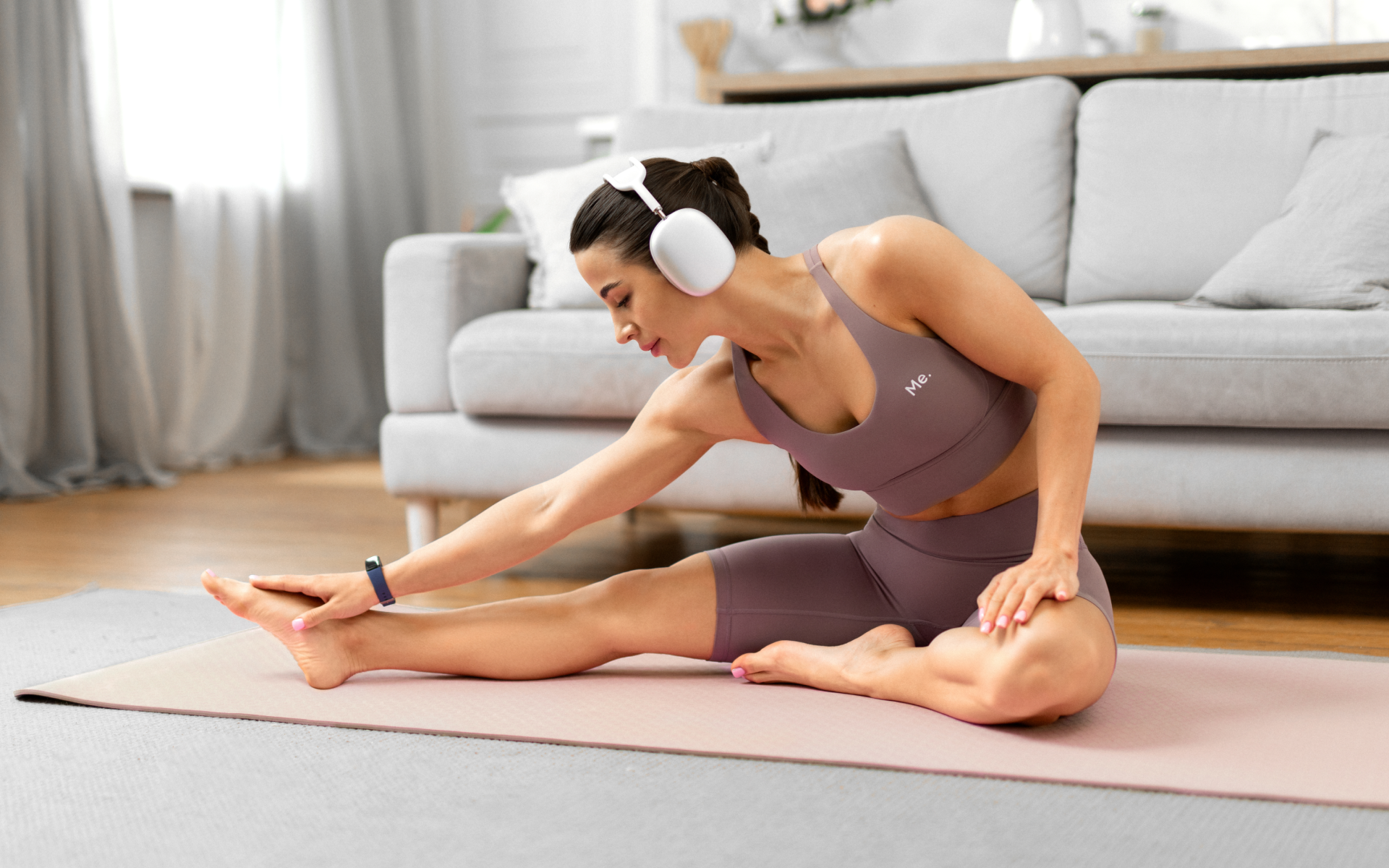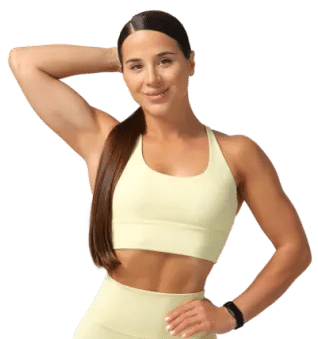Home workouts aren’t a compromise, they’re a solution. With the right approach, they can deliver the same benefits as a gym-based program, from building strength and improving cardiovascular health to enhancing mental clarity and reducing stress.
Whether you’re a beginner who is looking to establish a fitness routine or someone with experience who is seeking a more convenient option, home workouts can be tailored to meet your unique needs and goals.
Read on for a science-backed, practical guide to creating an effective home workout plan. We’ll explore exercises that require minimal equipment, tips to maximize your results, and answers to common questions about training at home.
Can I Get in Shape with Home Workouts?
Home workouts can get you in shape by:
Building Strength and Muscle Tone
Strength training is a cornerstone of getting in shape and home workouts can be just as effective as gym sessions when they’re done correctly. Bodyweight exercises such as push-ups, squats, and planks are excellent for building foundational strength. Adding resistance bands or dumbbells can further enhance muscle engagement and progression (1).
Muscle growth and strength improvements depend more on consistent effort and progressive overload than on the location of your workout. With proper form and a structured plan, you can achieve significant strength gains at home.
Improving Cardiovascular Fitness
Cardiovascular health is a key component of overall fitness (2) and home workouts offer several ways to elevate your heart rate.
High-intensity interval training (HIIT) is particularly effective as it combines short bursts of intense activity with brief recovery periods (3). Exercises such as jumping jacks, burpees, and mountain climbers require no equipment and can be tailored to suit your fitness level.
Regular cardio improves endurance, supports heart health, boosts metabolism, and enhances energy levels throughout the day (4, 5).
Enhancing Flexibility and Mobility
Flexibility and mobility are often overlooked aspects of fitness, but they’re essential for functional movement and injury prevention. Home workouts provide the perfect opportunity to incorporate stretching and mobility exercises into your routine.
Practices such as yoga or dynamic stretching improve joint range of motion, reduce muscle stiffness, and promote better posture (6, 7). These benefits are particularly valuable for women who may experience tightness from prolonged sitting or repetitive daily activities.
BetterMe: Health Coaching app helps you achieve your body goals with ease and efficiency by helping to choose proper meal plans and effective workouts. Start using our app and you will see good results in a short time.
Supporting Mental Health and Stress Management
Exercise isn’t just about physical transformation, it also has profound effects on mental well-being. Home workouts can help reduce stress, improve mood, and enhance focus by triggering the release of endorphins and other neurochemicals (8).
Activities such as yoga, Pilates, or a simple 20-minute workout can serve as a mental reset, providing a sense of accomplishment and clarity. The convenience of working out at home also eliminates common stressors such as commuting to a gym, which makes it easier to remain consistent.
Promoting Sustainable Habits
One of the greatest advantages of home workouts is their adaptability to your lifestyle. Eliminating barriers such as travel time and gym fees makes it easier to establish a consistent routine.
Consistency is the foundation of any fitness journey and home workouts allow you to integrate exercise into your daily schedule seamlessly.
Whether it’s a quick session before work or a longer workout on weekends, the flexibility of training at home supports long-term adherence and sustainable progress.
Tailoring Workouts to Individual Goals
Getting in shape means different things to different people and home workouts can be customized to align with your specific goals. Whether you’re aiming to lose weight, build muscle, or improve your overall fitness, a well-designed home program can address your needs. For example, combining strength training with cardio and mobility work creates a balanced approach that supports both physical and mental health.
Read more: Pilates At Home Challenge: A Detailed Guide For Building Core Strength Without Leaving Your Room
How to Create a Home Workout Plan for Women
Designing a home workout plan requires a thoughtful, individualized approach that considers your goals, fitness level, and available resources. Uncover the surprising benefits of workout plan for women at home in our past article.
1. Define Your Goals
The first step in creating any workout plan is to identify what you want to achieve. Goals provide direction and help shape the structure of your routine. Common goals include:
- Building strength and muscle tone
- Improving cardiovascular fitness
- Enhancing flexibility and mobility
- Losing weight or maintaining a healthy body composition
- Boosting mental well-being and reducing stress
Once you’ve clarified your primary goal, you can tailor your exercises, intensity, and frequency to align with it. For example, if your goal is strength, prioritize resistance training, or if it’s cardiovascular fitness, focus on HIIT or steady-state cardio.
2. Assess Your Fitness Level and Limitations
Understanding your current fitness level is essential when designing a plan that challenges you without risking injury. Ask yourself:
- Am I a beginner, intermediate, or advanced in terms of fitness?
- Do I have any injuries or physical limitations to consider?
- What is my current level of strength, endurance, and flexibility?
Beginners should start with foundational movements and lower intensity. If you’re more advanced, incorporate progressive overload by increasing resistance, reps, or workout complexity over time.
3. Choose the Right Equipment (or Go Equipment-Free)
Home workouts can be effective with minimal or no equipment. However, having a few basic tools can expand your options. Consider:
- Bodyweight exercises: Push-ups, squats, lunges, and planks require no equipment.
- Resistance bands: Lightweight, portable, and versatile for strength training.
- Dumbbells or kettlebells: Great for adding resistance to your workouts.
- Yoga mat: Essential for comfort during floor exercises or stretching.
If you don’t have equipment, focus on bodyweight exercises and creative modifications, such as using household items (e.g. water bottles as weights).
4. Structure Your Weekly Routine
A well-rounded workout plan includes a mix of strength, cardio, and mobility work. Here’s a sample weekly structure:
- Day 1: Strength training (upper body)
- Day 2: Cardio (HIIT or steady-state)
- Day 3: Active recovery (yoga or stretching)
- Day 4: Strength training (lower body)
- Day 5: Cardio (low-impact or moderate intensity)
- Day 6: Full-body strength + core
- Day 7: Rest or light mobility work
Adjust the schedule based on your availability and recovery needs. Aim for at least 3-5 sessions per week, depending on your fitness level and goals.
5. Select Exercises for Each Session
Each workout should include exercises that target specific muscle groups or fitness components. Here’s how to break it down:
Strength Training:
- Upper body: Push-ups, resistance band rows, shoulder presses.
- Lower body: Squats, lunges, glute bridges.
- Core: Planks, Russian twists, mountain climbers.
Cardio:
- HIIT: 30 seconds of burpees, followed by 30 seconds of rest, repeated for 10-15 minutes.
- Steady-State: 20-30 minutes of brisk walking, jogging, or cycling.
Mobility and Flexibility:
- Dynamic stretches: Leg swings, arm circles.
- Static stretches: Hamstring stretches, child’s pose.
Looking for a challenging but effective workout routine for women at home? Check our earlier post.
6. Prioritize Warm-Ups and Cool-Downs
Every workout should begin with a warm-up to prepare your body and reduce the risk of injury (9). Spend 5-10 minutes on:
- Light cardio (e.g. marching in place or jumping jacks).
- Dynamic stretches to activate key muscle groups.
In addition, you should end each session with a cool-down to promote recovery (10). Focus on:
- Gentle stretching to improve flexibility.
- Deep breathing to lower your heart rate and relax your nervous system.
7. Track Progress and Adjust
Tracking your progress helps you stay motivated and ensures your plan remains effective. Keep a journal or use a fitness app to record:
- Exercises performed, sets, and reps.
- How you feel during and after workouts.
- Any changes in strength, endurance, or body composition.
As you improve, gradually increase the intensity, duration, or complexity of your workouts to continue challenging your body.
8. Incorporate Recovery and Rest
Recovery is just as important as the workouts. Ensure you’re getting adequate sleep, staying hydrated, and including rest days in your routine. Active recovery, such as light stretching or walking, can also help reduce muscle soreness and improve circulation (11).
Read more: Home Pilates Workout Guide: Strengthen Your Core
What At-Home Exercises Are Best for Weight Loss for Women?
When it comes to weight loss, the most effective exercises are those that combine calorie-burning potential with muscle engagement. A well-rounded at-home routine should include a mix of cardio, strength training, and core exercises to maximize fat loss while preserving lean muscle mass.
Cardio Exercises
Cardio is essential for creating a calorie deficit, which is key to weight loss (12). High-intensity interval training (HIIT) is particularly effective as it burns calories quickly and boosts your metabolism for hours after the workout (13). Here are some great options:
- Jumping Jacks: A full-body movement that elevates your heart rate quickly.
- Burpees: Combine cardio and strength by engaging multiple muscle groups.
- Mountain Climbers: Target your core while providing a cardio challenge.
- High Knees: A simple yet effective way to get your heart rate up in a small space.
How to Use: Perform 20-30 seconds of each exercise, followed by 10-15 seconds of rest. Repeat for 4-6 rounds for a quick, effective cardio session.
Strength Training Exercises
Strength training is essential for weight loss as it builds muscle, which increases your resting metabolic rate (14). This means you’ll burn more calories even when you’re not exercising. Focus on compound movements that work multiple muscle groups:
- Bodyweight Squats: Strengthen your legs and glutes while engaging your core.
- Push-Ups: Target your chest, shoulders, and triceps, with core activation.
- Lunges: A unilateral exercise that improves balance and strengthens your lower body.
- Resistance Band Rows: Work your back and biceps, improving posture and strength.
How to Use: Perform 3 sets of 10-12 reps for each exercise. If you’re a beginner, start with fewer reps and focus on proper form.
Core Exercises
A strong core enhances your overall fitness and also supports better posture and balance (15). Core exercises are particularly effective when they’re combined with other movements to engage multiple muscle groups. Try the following:
- Plank Variations: Standard planks, side planks, or plank shoulder taps for stability and strength.
- Russian Twists: These target your obliques and improve rotational strength.
- Leg Raises: They strengthen your lower abs and hip flexors.
- Bicycle Crunches: Combine core engagement with a cardio element.
How to Use: Include 2-3 core exercises in your routine, performing 3 sets of 15-20 reps or holding planks for 30-60 seconds.
Combination Movements
Combination exercises are highly efficient for weight loss as they engage multiple muscle groups and elevate your heart rate simultaneously. These are particularly useful for time-efficient workouts:
- Squat to Press: Combines a squat with an overhead press using dumbbells or resistance bands.
- Lunge with Bicep Curl: Adds an upper-body element to a lower-body movement.
- Push-Up to Resistance Band Row: Incorporates a pulling motion into a traditional push-up.
- Burpee with Jump Squat: A high-intensity move that combines cardio and strength.
How to Use: Perform 3 sets of 8-10 reps for each combination exercise, focusing on controlled movements.
Low-Impact Options
For those who prefer or require low-impact exercises, there are still effective ways to burn calories and lose weight. These exercises are gentle on the joints, but they still provide a solid workout:
- Step-Ups: Use a sturdy chair or step to work your legs and glutes.
- Modified Push-Ups: Perform push-ups on your knees to reduce strain.
- Seated Marches: A low-impact cardio option that can be done from a chair.
- Glute Bridges: Strengthen your glutes and core without high impact.
How to Use: Incorporate these exercises into your routine if you’re recovering from an injury or you prefer a gentler approach.
Stretching and Mobility Work
While not directly linked to calorie burn, stretching and mobility exercises are essential for recovery and injury prevention. They also improve your range of motion, which makes other exercises more effective (16). Include:
- Dynamic Stretches: Leg swings, arm circles, and spinal twists as part of your warm-up.
- Static Stretches: Hamstring stretches, child’s pose, and hip flexor stretches post-workout.
- Foam Rolling: Helps release muscle tension and improve circulation.
How to Use: Dedicate 5-10 minutes to stretching after each workout to enhance recovery and flexibility.
What Is a Good Workout Schedule for a Woman?
Below is a sample weekly workout plan that’s tailored for women. Each session includes specific exercises, sets, reps, and rest periods to guide you through an effective at-home routine. To learn more about at home workout plan without equipment, check out our in-depth article on the topic.
Day 1: Full-Body Strength Training
Strength training is essential for building lean muscle, which boosts your metabolism and supports long-term weight loss (17).
Warm-Up (5-7 minutes):
- Jumping jacks: 1 minute
- Arm circles: 30 seconds forward, 30 seconds backward
- Walking lunge with a twist: 10 reps each side
Workout:
- Bodyweight squats: 3 sets of 12-15 reps
- Focus on depth and control.
- Push-ups (modified if needed): 3 sets of 8-12 reps
- Keep your core engaged throughout.
- Glute bridges: 3 sets of 12-15 reps
- Squeeze your glutes at the top of each rep.
- Plank shoulder taps: 3 sets of 20 taps (10 per side)
- Maintain a stable core to avoid rocking.
Rest: 30-60 seconds between sets.
Cool-Down (5 minutes):
- Hamstring stretch: 30 seconds per leg
- Child’s pose: 30 seconds
Day 2: Cardio and Core (HIIT)
High-intensity interval training (HIIT) is a time-efficient way to burn calories and improve cardiovascular fitness (3).
Warm-Up (5 minutes):
- March in place: 1 minute
- High knees: 30 seconds
- Dynamic stretches: Leg swings and arm circles
Workout (20 minutes):
Perform each exercise for 30 seconds, followed by 15 seconds of rest. Complete 4 rounds.
- Burpees
- Mountain climbers
- Jump squats
- Russian twists (with or without weight)
Cool-Down (5 minutes):
- Cat-cow stretch: 30 seconds
- Seated forward fold: 30 seconds
Day 3: Active Recovery (Yoga or Stretching)
Active recovery helps reduce muscle soreness and improves flexibility (18).
Routine (20-30 minutes):
- Downward dog to cobra flow: 5 reps
- Warrior II pose: Hold for 30 seconds per side
- Seated spinal twist: 30 seconds per side
- Butterfly stretch: 30 seconds
Focus on deep breathing to relax your nervous system.
Day 4: Lower-Body Strength Training
Targeting the lower body builds strength and supports fat loss by engaging large muscle groups.
Warm-Up (5-7 minutes):
- Lateral shuffle: 10 reps per side
- Hip circles: 30 seconds per side
- Glute bridges: 10 reps
Workout:
- Step-ups (using a sturdy chair): 3 sets of 10 reps per leg
- Drive through your heel as you step up.
- Lateral lunges: 3 sets of 10 reps per leg
- Keep your front knee aligned with your ankle.
- Side-lying leg lifts: 3 sets of 12 reps per side
- Focus on controlled movements.
- Wall sit: 3 rounds of 30-45 seconds
- Keep your back flat against the wall.
Rest: 30-60 seconds between sets.
Cool-Down (5 minutes):
- Quad stretch: 30 seconds per leg
- Pigeon pose: 30 seconds per side
Day 5: Cardio and Core (Steady-State)
Steady-state cardio complements HIIT by improving endurance and promoting fat burning (19).
Warm-Up (5 minutes):
- March in place: 1 minute
- Side steps with arm swings: 1 minute
- Dynamic stretches: Hamstring kicks and torso twists
Workout (20-30 minutes):
- Brisk walking, jogging, or cycling (indoors or outdoors).
- Maintain a moderate intensity where you can talk but feel slightly out of breath.
Core Finisher:
- Plank hold: 3 rounds of 30-60 seconds
- Bicycle crunches: 3 sets of 15 reps per side
Cool-Down (5 minutes):
- Standing forward fold: 30 seconds
- Child’s pose: 30 seconds
Reasons why BetterMe is a safe bet: a wide range of calorie-blasting workouts, finger-licking recipes, 24/7 support, challenges that’ll keep you on your best game, and that just scratches the surface! Start using our app and watch the magic happen.
Day 6: Full-Body Strength and Cardio Circuit
Combining strength and cardio in a circuit format maximizes calorie burn and muscle engagement.
Warm-Up (5-7 minutes):
- Jumping jacks: 1 minute
- Bodyweight squats: 10 reps
- Arm swings: 30 seconds
Circuit (Repeat 3 Rounds):
- Incline push-ups: 10-12 reps
- Jump squats: 10-12 reps
- Farmer’s carry: 20 steps total – slow and controlled
- High knees: 30 seconds
Rest: 1 minute between rounds.
Cool-Down (5 minutes):
- Cat-cow stretch: 30 seconds
- Seated forward fold: 30 seconds
Day 7: Rest or Light Activity
Rest is essential for recovery and long-term progress (20). Use this day to relax or engage in light activities such as walking, stretching, or yoga.
How Long Should a Daily Workout Last?
The World Health Organization (WHO) recommends at least 150 minutes of moderate-intensity aerobic activity or 75 minutes of vigorous-intensity activity per week, combined with two strength-training sessions (21). This can be broken down into manageable daily sessions:
- Duration: 20-30 minutes per day, 5 days a week.
- Focus: A mix of cardio, strength, and flexibility exercises.
- Example Routine:
- 10 minutes of brisk walking or jumping jacks (cardio).
- 10 minutes of bodyweight exercises such as squats and push-ups (strength).
- 5 minutes of stretching or yoga poses (flexibility).
This approach supports overall health, improves energy levels, and reduces the risk of chronic diseases.
If weight loss is your primary goal, you’ll need to focus on creating a calorie deficit through a combination of exercise and nutrition (22). Longer or more intense workouts can help increase calorie burn.
It depends on your goals, preferences, and resources. A home gym offers convenience, privacy, and flexibility, while a traditional gym provides access to more equipment and professional guidance. Both can be equally effective if you remain consistent and follow a structured plan. Yes, home workouts can be highly effective when designed properly. Research has shown that bodyweight exercises, resistance bands, and minimal equipment can build strength, improve cardiovascular fitness, and support weight loss (1). The key is consistency, progression, and proper form. The number of squats depends on your fitness level and goals. For general fitness, aim for 3 sets of 10-15 squats, 2-3 times per week. If you’re more advanced, you can increase the reps or add resistance. Quality and form are more important than quantity. High-intensity interval training (HIIT) is one of the most effective workouts for fat loss. It combines short bursts of intense activity with brief recovery periods, maximizing calorie burn and boosting metabolism (3). Strength training also plays a key role by preserving muscle and increasing resting metabolic rate (17). However, fat loss comes down to creating an energy deficit where you burn more calories than you consume. HIIT and strength training are both great calorie burners, but without proper food intake, your fat loss will be minimal. Frequently Asked Questions
Is a home gym better than the real gym?
Do home workouts actually work?
How many squats should you do per day?
What workout burns the most fat for females?
The Bottom Line
A well-designed home workout plan for women can be just as effective as a gym-based routine, offering flexibility, convenience, and results when approached with consistency and structure. By incorporating a mix of strength training, cardio, and recovery, women can achieve their fitness goals – whether it’s weight loss, muscle tone, or improved overall health.
DISCLAIMER:
This article is intended for general informational purposes only and does not serve to address individual circumstances. It is not a substitute for professional advice or help and should not be relied on for making any kind of decision-making. Any action taken as a direct or indirect result of the information in this article is entirely at your own risk and is your sole responsibility.
BetterMe, its content staff, and its medical advisors accept no responsibility for inaccuracies, errors, misstatements, inconsistencies, or omissions and specifically disclaim any liability, loss or risk, personal, professional or otherwise, which may be incurred as a consequence, directly or indirectly, of the use and/or application of any content.
You should always seek the advice of your physician or other qualified health provider with any questions you may have regarding a medical condition or your specific situation. Never disregard professional medical advice or delay seeking it because of BetterMe content. If you suspect or think you may have a medical emergency, call your doctor.
SOURCES:
- No Time to Lift? Designing Time-Efficient Training Programs for Strength and Hypertrophy: A Narrative Review (2021, pmc.ncbi.nlm.nih.gov)
- Cardiorespiratory Fitness in Youth – An Important Marker of Health: A Scientific Statement From the American Heart Association (2020, pmc.ncbi.nlm.nih.gov)
- Evidence-Based Effects of High-Intensity Interval Training on Exercise Capacity and Health: A Review with Historical Perspective (2021, pmc.ncbi.nlm.nih.gov)
- Eight weeks of aerobic exercise, but not four, improves insulin sensitivity and cardiovascular performance in young women (2025, nature.com)
- Adaptations to Endurance and Strength Training (2018, pmc.ncbi.nlm.nih.gov)
- Exploring the therapeutic effects of yoga and its ability to increase quality of life (2011, pmc.ncbi.nlm.nih.gov)
- Practical recommendations on stretching exercise: A Delphi consensus statement of international research experts (2025, sciencedirect.com)
- The Effects of Acute Exercise on Mood, Cognition, Neurophysiology, and Neurochemical Pathways: A Review (2017, pmc.ncbi.nlm.nih.gov)
- Warm Up, Cool Down | American Heart Association (2024, heart.org)
- Do We Need a Cool-Down After Exercise? A Narrative Review of the Psychophysiological Effects and the Effects on Performance, Injuries and the Long-Term Adaptive Response (2018, pmc.ncbi.nlm.nih.gov)
- A Systematic Review on the Effectiveness of Active Recovery Interventions on Athletic Performance of Professional-, Collegiate-, and Competitive-Level Adult Athletes (2019, journals.lww.com)
- Optimal Diet Strategies for Weight Loss and Weight Loss Maintenance (2020, pmc.ncbi.nlm.nih.gov)
- High-Intensity Intermittent Exercise and Fat Loss (2010, pmc.ncbi.nlm.nih.gov)
- Resistance training – health benefits (2022, betterhealth.vic.gov.au)
- Core strengthening (2004, archives-pmr.org)
- The Surprising Benefits of Performing Daily Mobility Exercises (2023, acefitness.org)
- Strength training: Get stronger, leaner, healthier (2023, mayoclinic.org)
- Active Recovery: Reduce Fatigue and Enhance Performance (2010, issaonline.com)
- Slow and Steady, or Hard and Fast? A Systematic Review and Meta-Analysis of Studies Comparing Body Composition Changes between Interval Training and Moderate Intensity Continuous Training (2021, ncbi.nlm.nih.gov)
- Why Rest Days Are Important for Muscle Building (n.d., blog.nasm.org)
- Physical activity (n.d., who.int)
- “Calories in, calories out” and macronutrient intake: the hope, hype, and science of calories (2017, journals.physiology.org)
